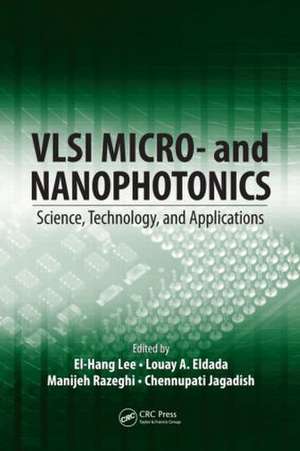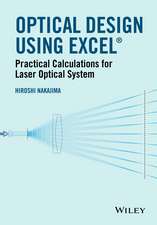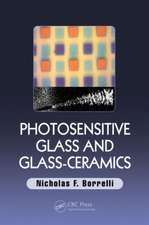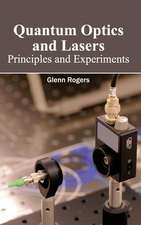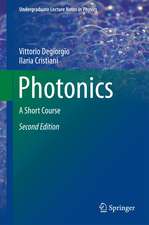VLSI Micro- and Nanophotonics: Science, Technology, and Applications
Editat de El-Hang Lee, Louay Eldada, Manijeh Razeghi, Chennupati Jagadishen Limba Engleză Hardback – 22 sep 2010
Very little effort has been made to develop integration technologies for micro/nanoscale photonic devices and applications, so this reference is an important and necessary early-stage perspective on this field. New demand for VLSI photonics brings into play various technological and scientific issues, as well as evolutionary and revolutionary challenges—all of which are discussed in this book. These include topics such as miniaturization, interconnection, and integration of photonic devices at micron, submicron, and nanometer scales.
With its "disruptive creativity" and unparalleled coverage of the photonics revolution in information technology, this book should greatly impact the future of micro/nano-photonics and IT as a whole. It offers a comprehensive overview of the science and engineering of micro/nanophotonics and photonic integration. Many books on micro/nanophotonics focus on understanding the properties of individual devices and their related characteristics. However, this book offers a full perspective from the point of view of integration, covering all aspects of benefits and advantages of VLSI-scale photonic integration—the key technical concept in developing a platform to make individual devices and components useful and practical for various applications.
Preț: 1300.17 lei
Preț vechi: 1585.57 lei
-18% Nou
Puncte Express: 1950
Preț estimativ în valută:
248.87€ • 270.41$ • 209.18£
248.87€ • 270.41$ • 209.18£
Carte tipărită la comandă
Livrare economică 21 aprilie-05 mai
Preluare comenzi: 021 569.72.76
Specificații
ISBN-13: 9781574447293
ISBN-10: 1574447297
Pagini: 634
Ilustrații: 569 b/w images and 34 tables
Dimensiuni: 178 x 254 x 36 mm
Greutate: 1.25 kg
Ediția:1
Editura: CRC Press
Colecția CRC Press
ISBN-10: 1574447297
Pagini: 634
Ilustrații: 569 b/w images and 34 tables
Dimensiuni: 178 x 254 x 36 mm
Greutate: 1.25 kg
Ediția:1
Editura: CRC Press
Colecția CRC Press
Public țintă
ProfessionalCuprins
Introduction. Scientific and Engineering Issues. Integrated Photonic Technologies: Microring Structures. Integrated Photonic Technologies: Photonic Crystals and Integrated Circuits. Integrated Photonic Technologies: Plasmonics and Integration. Integrated Photonic Technologies: Quantum Devices and Integration. Integrated Photonic Technologies: Planar Lightwave Circuits. Integrated Photonic Technologies: Optical-Printed Circuit Boards. Technologies for Emerging Applications: Renewable Energy Generation. Technologies for Emerging Applications: Photonic DNA Computing. Technologies for Emerging Applications: Sensing Applications. Index.
Recenzii
For students, scholars, practitioners, researchers, and industrialists, Lee (information technology, Inha U., South Korea) et al. compile 24 chapters that explore science and technology issues associated with micro/nano-scale photonics and integration for broad-scale and chip-scale very-large-scale-integration (VSLI) photonics. The contributors, an international group of physics, engineering, and information technology researchers from universities and industry, address issues such as miniaturization, interconnection, and integration of photonic devices at micron, submicron, and nanometer scales, and micro-ring structures, photonic crystals and integrated circuits, plasmonics, quantum devices, planar lightwave circuits, optical-printed circuit boards, and applications in renewable energy generation, photonic DNA computing, and sensing.
—In Research Book News, booknews.com, February 2011
—In Research Book News, booknews.com, February 2011
Notă biografică
El-Hang Lee, Chennupati Jagadish
Descriere
There is a significant difference between VLSI (very large scale integration) micro/nanoelectronics and VLSI micro/nanophotonics. This book is about the latter, which defines photonic devices, circuits, and subsystems of micron, submicron, nano-scale, and quantum-scale dimensions. It examines issues concerning three essential steps in this technology: miniaturization, interconnection, and integration of microphotonic devices, circuits, and systems at micron or submicron scale. It highlights the technology’s advantages with respect to size as well as its ability to offer unexplored functions for novel applications.
